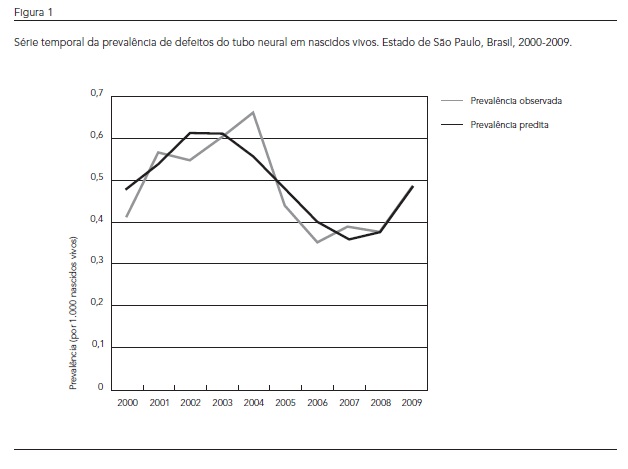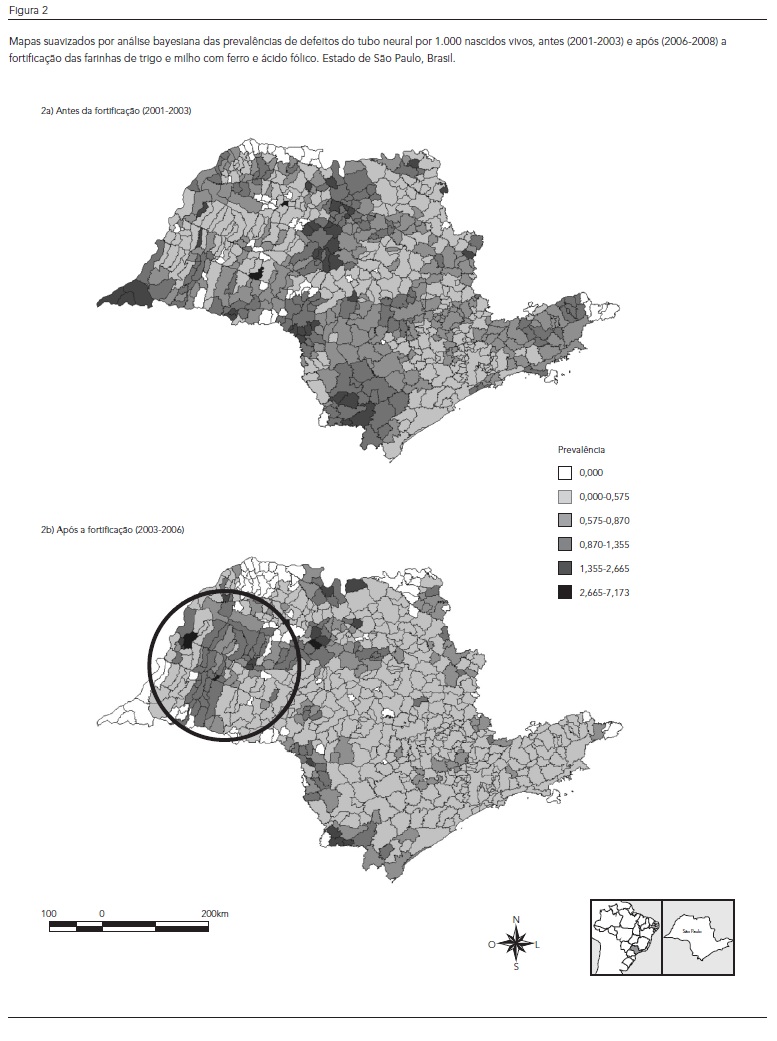This cross-sectional study analyzed the prevalence and spatial distribution of neural tube defects before and after folic acid flour fortification. The study used the Information System on Live Births (SINASC) and presented prevalence rates according to maternal characteristics with odds ratios (OR) and 95% confidence intervals (95%CI). Polynomial regression was used in time trend analysis and empirical Bayesian smoothed maps for spatial analysis. Total prevalence of neural tube defects decreased by 35%, from 0.57/1,000 to 0.37/1,000 live births after fortification (OR = 0.65; 95%CI: 0.59-0.72). There was a reduction among newborns of mothers with the following characteristics: all age groups (except < 15 years), more than three years of schooling, and seven or more prenatal visits. There was a reduction over time and in most of São Paulo State, except in a few municipalities (counties) located in the western region of the State. Other factors may have contributed to the observed decline, but the results corroborate flour fortification as an important measure to prevent neural tube defects. Further research is needed to elucidate the lack of a decline in neural tube defects in the western part of São Paulo State.
Neural Tube Defects; Fortified Food; Folic Acid; Maternal and Child Health




